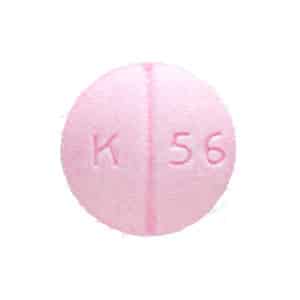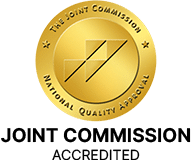Pink Percocet 10, a powerful opioid analgesic, has become a growing concern all over the US, especially in South Florida. In 2022, for instance, the Sunshine State reported over 5,000 opioid-related deaths. The alarming number highlights the urgent need for effective treatment options.
In this article, we explore what pink Percocet is, its effects, and the available addiction treatment options to help you or your loved ones find a path to recovery.
Table of Contents
What is Pink Percocet 10? What Does It Treat?

Pink Percocet 10 is a prescription opioid medication containing two active ingredients: oxycodone hydrochloride (10 mg) and acetaminophen (325 mg). It’s known for its distinctive pink color and the number imprint.
Quick fact: Percocet is only the brand name. Oxycodone is the drug’s opioid component, and not Percocet as many assume.
Healthcare providers prescribe this medication to treat moderate to severe pain, often after surgery or for chronic conditions. It’s a short-term pain medication that’s effective in managing acute pain.
Note: Always follow your doctor’s medical advice and never use pink Percocet 10 without a valid prescription.
How Does Pink Percocet 10 Work?
Pink oxycodone works by targeting the central nervous system (CNS) to provide pain relief. The oxycodone component binds to opioid receptors in the brain and spinal cord, altering your perception of pain and providing analgesia.
It also triggers the release of dopamine. This neurotransmitter creates a sense of euphoria that contributes to the drug’s overall addictive potential.
Additionally, the acetaminophen in pink Percocet enhances pain relief by reducing inflammation. This combination makes the medication highly effective for pain management too.
However, the drug also affects other CNS functions, leading to some dangerous side effects (i.e. drowsiness and respiratory depression).
Is Pink Percocet 10 Legal?
Pink oxycodone is legal when prescribed by a healthcare professional and used as directed.
It’s classified as a Schedule II controlled substance by the US Drug Enforcement Administration (DEA) due to its high potential for drug abuse. This means it’s legal for medical use but strictly regulated.
Pharmacies must follow specific protocols when dispensing oxycodone pills as well, and patients need a valid prescription. Selling or distributing the drug without proper authorization is a serious criminal offense.
What are the Side Effects of Using Pink Percocet 10?
The use of oxycodone (Percocet) can cause various side effects, ranging from mild to severe. Common side effects include drowsiness, constipation, and nausea. Users might also experience dizziness, dry mouth, and itching.
More serious side effects can include respiratory depression, which slows breathing and can be life-threatening. Long-term use may lead to liver damage due to the acetaminophen content.
The drug can also cause changes in blood pressure and heart rate. Some people experience mood changes or confusion.
Note: The risk of side effects increases with high doses or when combined with other CNS depressants, such as alcohol, sedatives, or benzodiazepines.

Is Pink Percocet 10 Addictive?
Yes, Percocet is highly addictive. Its oxycodone component affects the brain’s reward system, leading to a high risk of addiction.
Quick Fact: Percocet is more addictive than most other opioids that act as pain relievers (like fentanyl and hydrocodone).
Even when used as prescribed, you can develop physical dependence. This means your body gets used to the drug, and you need higher doses for the same pain relief.
Sadly, addiction can happen quickly, sometimes in just a few weeks of regular use. You might find yourself thinking about the drug often or using it for reasons other than chronic pain.
Note: The risk of addiction is higher if you have a history of substance abuse or mental health issues.
Signs of Pink Percocet 10 Abuse
Spotting pink oxycodone abuse can be tricky, but there are some telltale signs. You might notice changes in behavior such as the following:
- Mood swings
- Secretive actions
- Doctor shopping to get more Percocet
- Neglecting work and home responsibilities
- Withdrawal from social activities
- Facing financial troubles
As for physical signs of abusing this drug, those can manifest as:
- Lightheadedness
- Confusion
- Constipation
- Small, pinpoint pupils
- Slurred speech
Signs of Pink Percocet 10 Overdose
An opioid overdose is a medical emergency. Key signs include extremely slow or shallow breathing – this is called respiratory depression and it’s life-threatening. Other signs include:
- Blue-tinged lips or fingernails (due to lack of oxygen)
- Person is unresponsive or hard to wake up
- Pinpoint pupils
- Cold, clammy skin
- Weak pulse
- Low blood pressure
- Confusion, extreme drowsiness, or loss of consciousness
Quick Fact: Naloxone is usually administered in cases of opiate overdose since it’s a fast-acting drug that can quickly reverse the aforementioned effects.

Symptoms of Pink Oxycodone Withdrawal
When you stop using Percocet, especially after long-term use, you might experience withdrawal symptoms. These can start within hours of your last dose and typically peak within 72 hours.
Early symptoms often include anxiety, restlessness, and sweating. You might feel like you have a bad flu, with muscle aches, runny nose, and fever. Nausea, vomiting, and diarrhea, on the other hand, are common gastrointestinal symptoms.
As withdrawal progresses, you may experience intense cravings for the drug. Insomnia is common at this stage, and even when you do sleep, you might have vivid nightmares. You could also feel irritable, with rapid mood swings.
Additionally, some people report goosebumps, dilated pupils, and high blood pressure.
Is Percocet Withdrawal Fatal?
While Percocet withdrawal isn’t usually life-threatening, it can be very uncomfortable. The intensity of the symptoms depends on factors like how long you’ve been using the drug and your typical dose.
Either way, when planning to stop using Percocet, it’s best to do it under medical supervision. A healthcare provider can help manage withdrawal symptoms and reduce the risk of relapse.
What are the Treatment Options for Percocet Addiction?
Treating Percocet addiction involves a comprehensive approach tailored to your needs. Remember, recovery is a personal process, and what works best can vary from person to person.
Always consult with addiction specialists to determine the most appropriate treatment plan for your situation. That said, here are some effective treatment options:
Medically Supervised Detoxification
This is often the first step in addiction treatment. Under medical supervision, you’ll safely withdraw from Percocet.
Healthcare professionals can provide medications to ease withdrawal symptoms and monitor your progress. This process helps manage the physical aspects of addiction and prepares you for further treatment.
Medication-Assisted Treatment (MAT)
MAT combines medications with counseling and behavioral therapies. Drugs like buprenorphine or methadone help subdue cravings and withdrawal symptoms.

Naltrexone, another option, blocks the effects of opioids. These medications, prescribed by a healthcare provider, can be crucial in maintaining long-term recovery.
Cognitive Behavioral Therapy (CBT)
CBT is a powerful tool in addiction treatment. It helps you identify and change negative thought patterns and behaviors related to drug use. You’ll also learn coping skills to manage stress and triggers, reducing the risk of relapse.
Support Groups
Joining support groups like Narcotics Anonymous (NA) can provide peer support and accountability. Sharing experiences with others who understand your struggle can be incredibly beneficial. These groups often use a 12-step program to guide recovery.
Holistic Therapies
Many treatment centers offer holistic approaches to complement traditional treatments. These may include yoga, meditation, art therapy, or acupuncture. These therapies can help manage stress, improve overall well-being, and support your recovery journey.
Recovery is Possible at Recreate Life Counseling
At Recreate Life Counseling, we understand the challenges of pink Percocet 10 addiction. We offer a range of services, including residential treatment, partial hospitalization, and intensive outpatient programs. Our approach also combines evidence-based therapies like CBT with holistic treatments.
We believe in recreating lives, not just treating symptoms. So if you’re struggling with opioid addiction, don’t let Percocet control your life any longer. Contact us today to start your journey to recovery. Remember, a new life is possible, and it starts with reaching out for help.
Published on: 2024-09-13
Updated on: 2025-04-29



